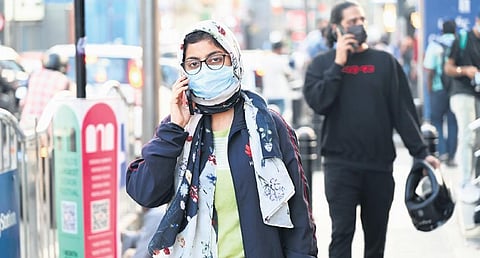

BENGALURU: The union health ministry on Friday confirmed that India recorded the first two deaths caused due to the H3N2 Influenza virus: one from Karnataka and the other from Haryana.
In Haryana’s Jind, a 56-year-old man, who was a cancer patient died on March 8. He had tested positive for the H3N2 virus in January at PGIMS hospital in Rohtak, officials said.
82-year-old Eregowda from Hassan district in Karnataka succumbed to the H3N2 Influenza virus on March 6. Karnataka Health Commissioner D Randeep confirmed Eregowda's death.
WATCH:
The District Health Officer (Hassan) said that Eregowda was admitted to the hospital on February 24 at the Hassan Institute of Medical Sciences and passed away six days later. He was brought to the hospital with Influenza-like symptoms and had comorbidities like hypertension and diabetes.
The health officers have surveyed all the primary and secondary contacts of the deceased Karnataka man to ensure all positive cases are identified. However, so far everybody including his wife has tested negative for the virus.
They plan to continue surveillance in the area for the next 14 days.
Health Minister Dr K Sudhakar also held a meeting with the state Technical Advisory Committee (TAC) earlier this week and released guidelines stating necessary precautions to be followed for avoiding the infection.
Sudhakar said the infection clears up within 2-5 days. “People who suffered from Covid-19 earlier seem to have a more intense cough after being infected with H3N2. More cases of infection are being seen in children below 15 years and those above 65 years. Pregnant women are also more likely to get infected."
He said that the spread of the infection can be tackled through measures such as cleanliness, preventing crowding, and hand hygiene.
The ICMR has said people should wear masks and cover their mouths and nose while sneezing and coughing. They should avoid crowded places, not touch their eyes and nose, and take plenty of fluids and Paracetamol for fever and body aches, it said.
ICMR also advised that people should not take antibiotics or other medicine without consulting a doctor. It added that people should not eat together while sitting close to each other, shake hands and not spit in public.
Meanwhile, on March 8, nearly 50 patients were admitted in a day at Hallet Hospital in Kanpur with symptoms of high fever, persistent cough, and shortness of breath. Dr Richa Giri, Head of the Medicine Department of Hallet Hospital told IANS, "It is difficult to differentiate this virus from Covid-19 and it is possible only after the test because it is a subtype of influenza A. It becomes difficult to test it because there is a separate kit for each subtype."
As the seasonal Influenza is spreading rapidly in the country, NITI Aayog will hold an inter-ministerial meeting on March 11 to review the status in the states and for ways to further support them regarding public health measures, management guidelines and protocols to manage the increasing number of cases.
The health ministry said Influenza H3N2 is the predominant subtype among the samples testing positive for Influenza since the beginning of this year. So far, a total of 3038 laboratory-confirmed cases of various subtypes of Influenza, including H3N2 have been reported till March 9 by the states.
This includes 1245 cases in January, 1307 in February and 486 cases on March 9.
397,814 cases of Acute Respiratory Illness/Influenza Like Illness (ARI/ILI) were reported from the country in January, which increased slightly to 436,523 in February. The statement further said that in the first nine days of March, the number stood at 133,412 cases.
States also reported severe acute respiratory illness (SARI) in the same period. While in January, 7041 cases were reported, in February, the number dipped to 6919, and till March 9, it came down to 1866.
The ministry also said that till February 28, a total of 955 H1N1 cases had been reported. The majority of the H1N1 cases are reported from Tamil Nadu (545), Maharashtra (170), Gujarat (74), Kerala (42) and Punjab (28).
Seasonal Influenza is an acute respiratory infection caused by influenza viruses that circulate in all parts of the world, and the cases are seen to increase during certain months globally.
Every year, India witnesses two seasonal influenza peaks - one from January to March and the other in the post-monsoon season.
The Health Ministry advised people to take Oseltamivir, which WHO has recommended, to treat symptoms caused by the influenza virus. The drug is made available through the Public Health System free of cost.
The government allowed the sale of Oseltamivir under Schedule H1 of the Drug and Cosmetic Act in February 2017 for broader accessibility and availability, the ministry said.
According to an advisory issued by the Indian Council of Medical Council (ICMR), H3N2 appears to cause more hospitalisations than other influenza subtypes. Of the hospitalised patients with H3N2, about 92 per cent presented with fever, 86 per cent with cough, 27 per cent with breathlessness, and 16 per cent with wheezing.
Additionally, 16 per cent had clinical signs of pneumonia, and six per cent had seizures.
(With inputs from Namrata Sidwani, Kavita Bajeli-Datt & Online Desk)